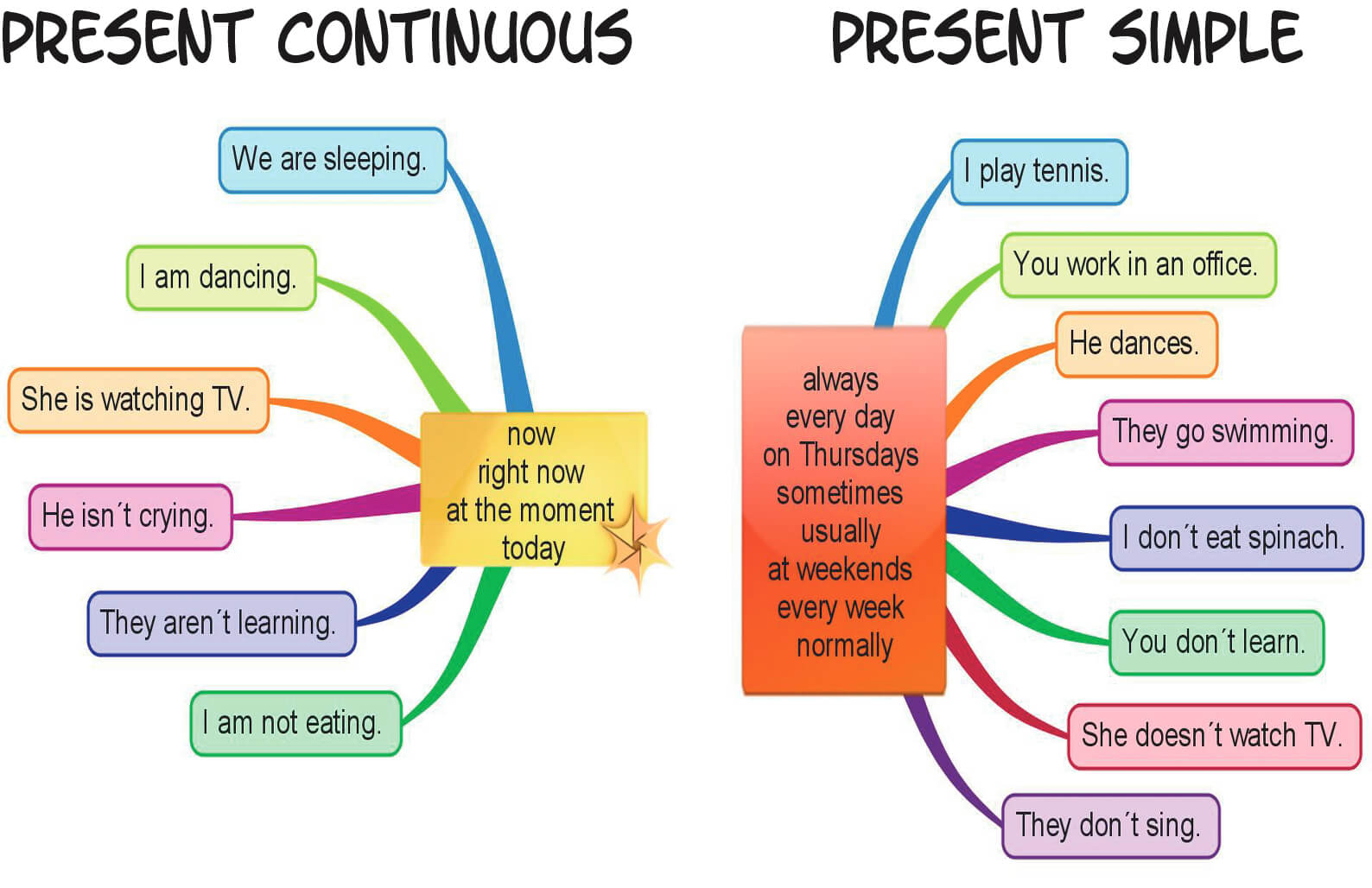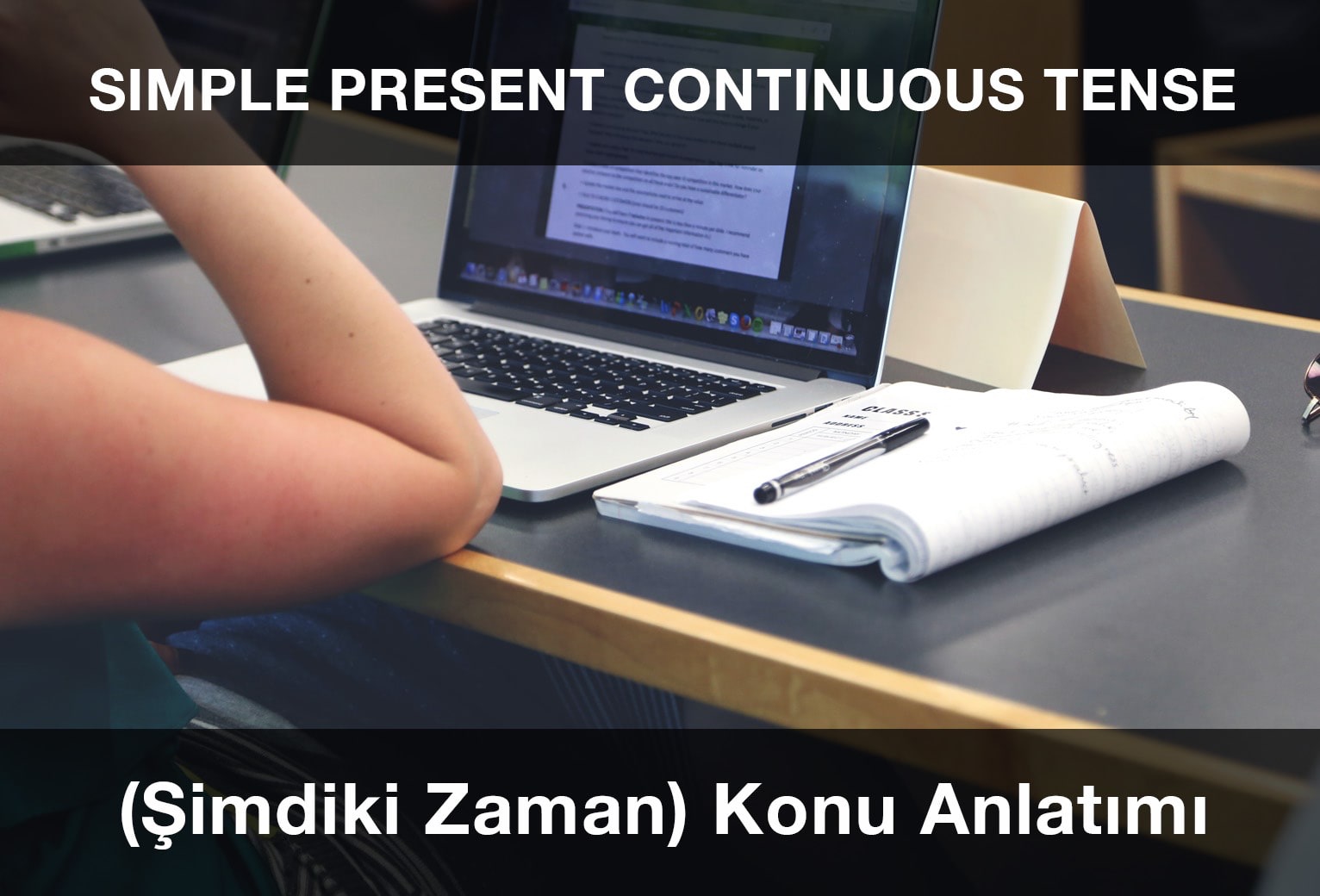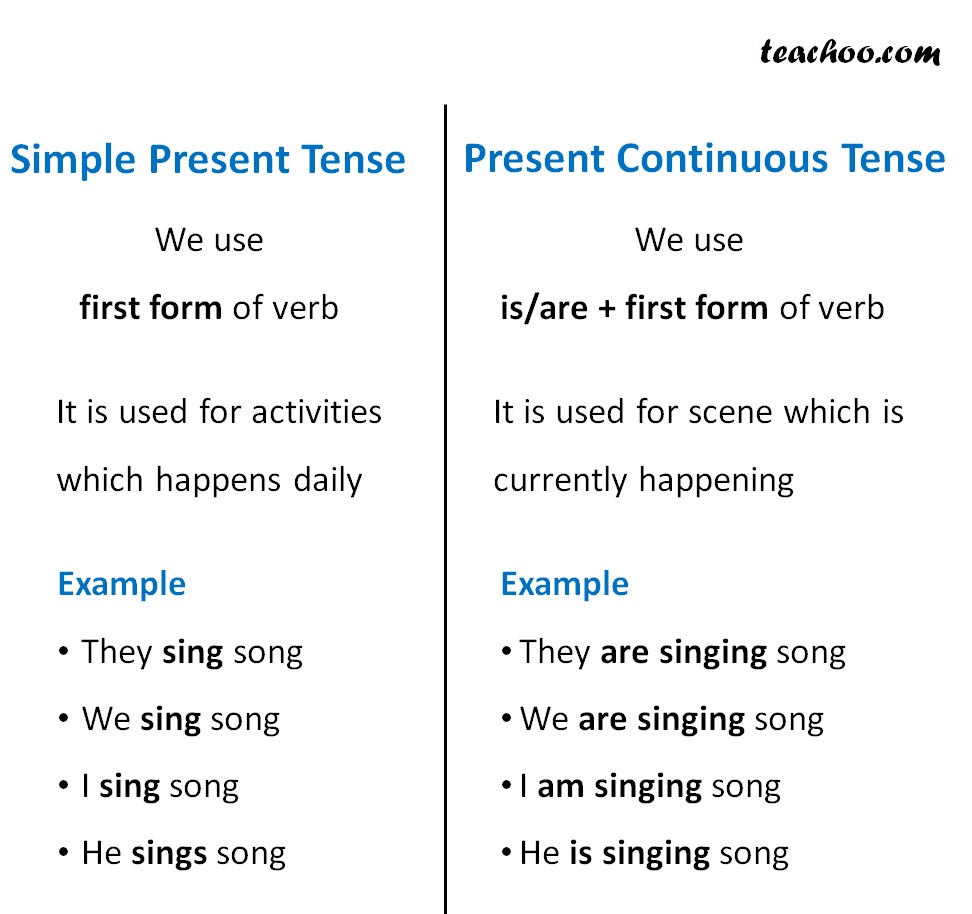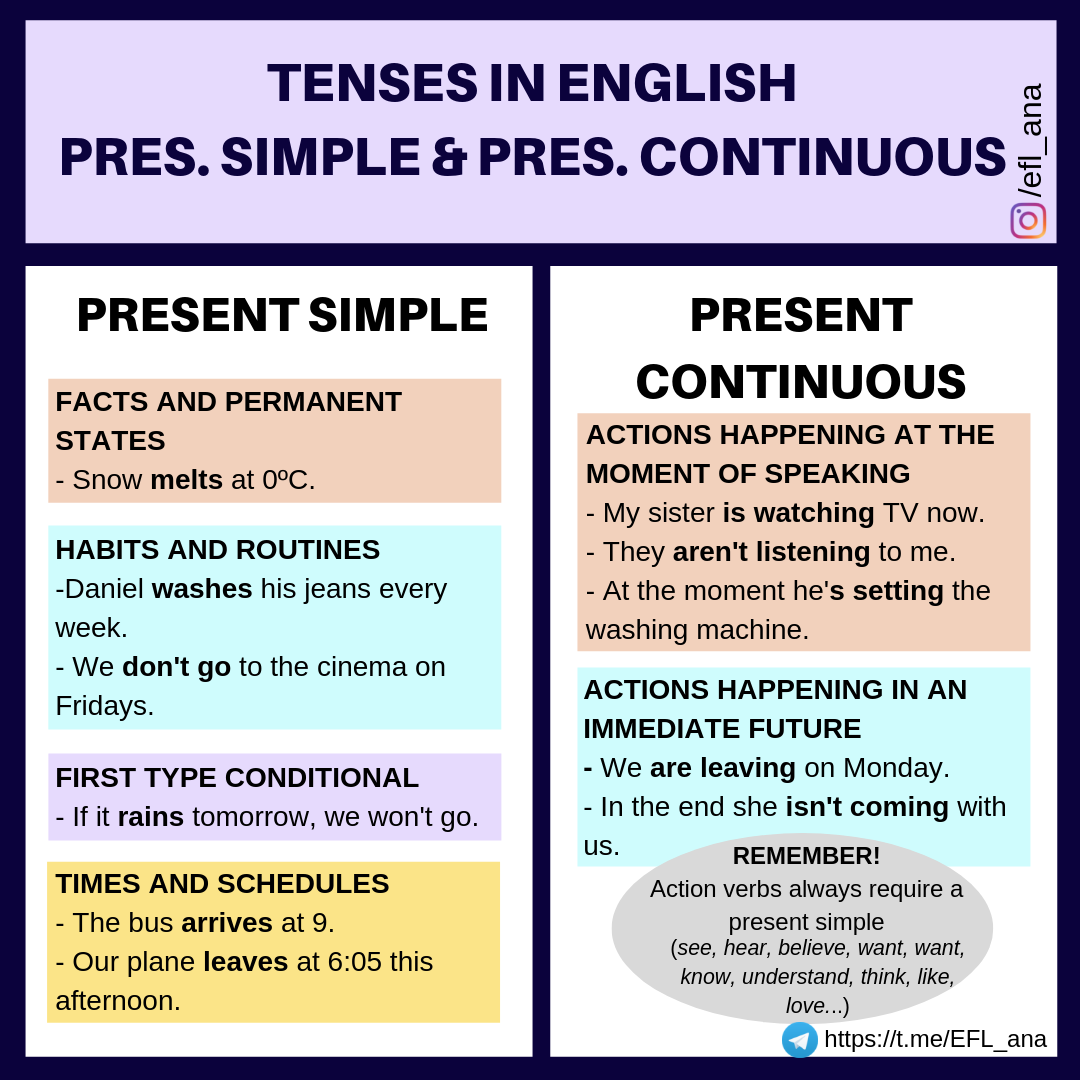
PMAR2 UNIT 1 PRESENT SIMPLE vs PRESENT CONTINUOUS
We use the present simple because this is a fact or is generally true. It is raining right now. We use the present continuous because we are talking about an action that is happening right now. It is in progress. It will not continue forever, it is temporary. Tomorrow it might be sunny. Compare these two sentences:

Present Continuous vs Simple Fark (İngilizcede Geniş Zaman ve Şimdiki
The present continuous tense can be used with positive, negative, and question sentences. For positive sentences, conjugate the helping verb "be" and add "ing" to the verb's end. For example: I'm (I am) working today. You're (You are) studying English at the moment. He's (He is) working on the report today. She's (She is) planning a vacation in.

Present Simple and Present Continuous Important Differences
The auxiliary verb (be) is conjugated in the Present Simple: am, are, is The main verb is invariable in present participle form: -ing For negative sentences we insert not between the auxiliary verb and the main verb.. For question sentences, we exchange the subject and the auxiliary verb.. Look at these example sentences with the Present Continuous tense:

Present Simple and Present Continuous Important Differences • 7ESL
Short ´cloze´ story designed for students to practise the use of the present simple and present continuous. Make sure to review or pre-teach usage. No-frills and low on images and colour so it can be used with all ages and save ink. Answer key included.

İngilizce Dersi 35 Present Simple Vs Present Continuous (Farkları
The present continuous tense normally requires a dynamic verb. Verbs that instead describe a state of being such as emotion, belief, perception, or possession are called stative verbs. Some examples include "prefer," "appear," "exist," and "own.". Stative verbs should not be used in the present continuous tense.

Simple Present Continuous Tense (Şimdiki Zaman) Konu Anlatımı (2023
Bu fiilleri Simple Present ve Present Continuous durumları açısından incelediğimizde kullanımlarının aynı olduğunu görürüz. Örnek verecek olursak; I'm very hungry. I want to eat something. / Çok açım, bir şeyler yemek istiyorum. (Şu anda) When I get up in the morning I want to eat cereal. / Sabah kalktığımda mısır.

Present Simple and Present Continuous Important Differences • 7ESL
Present Simple or Present Continuous Tense? Present Simple or Present Continuous? Perfect English Grammar What's the difference? Download this page in PDF Remember: We use the present simple with stative verbs. We can't use any continuous tense (including the present continuous tense, of course) with stative verbs.

Simple present, Present continuous farkı, İngilizce Tense (Video 3/11
Actions beginning at sometime in the past and continuing until the present time. An action that has taken place once or many times before. Experiences or changes taken place over a period of time. Note: Present perfect is never used with words indicating past time - yesterday, last night, last week and so on.

Present Simple ve Present Continuous karşılaştırması
Hepinizi hobileriniz, gezdiğiniz yerler, projeleriniz hakkında konuşmak üzere ilgili forumlara bekliyoruz. Will, be going to ve present continuous tense gelecekteki olayları anlatmak için kullanılır. Şimdi bunların arasındaki fark ve benzerlikleri inceleyelim. Will, be going to ve present continuous tense gelecekteki olayları.

Present simple ve present continuous konusu, aralarındaki farkı ve
Present simple or present continuous? - English Grammar Today - a reference to written and spoken English grammar and usage - Cambridge Dictionary

Valme's English Corner Present Simple vs. Present Continuous
The present continuous (present progressive) tense is a way to convey any action or condition that is happening right now, frequently, and may be ongoing.It adds energy and action to writing, and its effect helps readers understand when the action is happening. Imagine Aunt Christine has surprised her nephew Scott for his birthday and is going to take him out to his favorite restaurant, Polly.

Present Continuous Verbs and tenses
For the present simple, add s or es for he, she and it. For the negative, use don't for I, you, we and they, and doesn't for he, she and it. I watch cartoons every day. I don't watch the news. My dad makes dinner every evening. He doesn't make lunch. For the present continuous, use am, is or are and ing. For the negative, use not.

21. Present Continuous Tense Şimdiki Zaman YouTube
When do we use the PRESENT SIMPLE? When do we use the PRESENT CONTINUOUS? - More often than you think! Hi Everyone! In today's lesson, we look at two very sp.

Ana's ESL blog Present simple and present continuous
This is the present continuous tense. There is no information about the completion of the task. It started sometime in the near past and is still going on. In the present continuous tense, each verb has two parts. 1.Present tense form of verb 'to be' - is/am/are - known as helping verb. 2.'ing' form of the base verb. Eg.

Present Simple vs. Present Continuous English Grammar ESLBUZZ
The present continuous is made from the present tense of the verb be and the -ing form of a verb: We use the present continuous to talk about: activities at the moment of speaking: I'm just leaving work. I'll be home in an hour. Please be quiet. The children are sleeping. Present continuous 1 Present continuous 2 future plans or arrangements:

Present Simple ve Present Continuous Tense Farkı Lingua Matik
Bu videomuzda "Simple Present Tense" vs "Present Continuous Tense"in karşılaştırmalı konu anlatımını yapıyoruz.🔔Yeni videolardan bildirim almak için abone o.